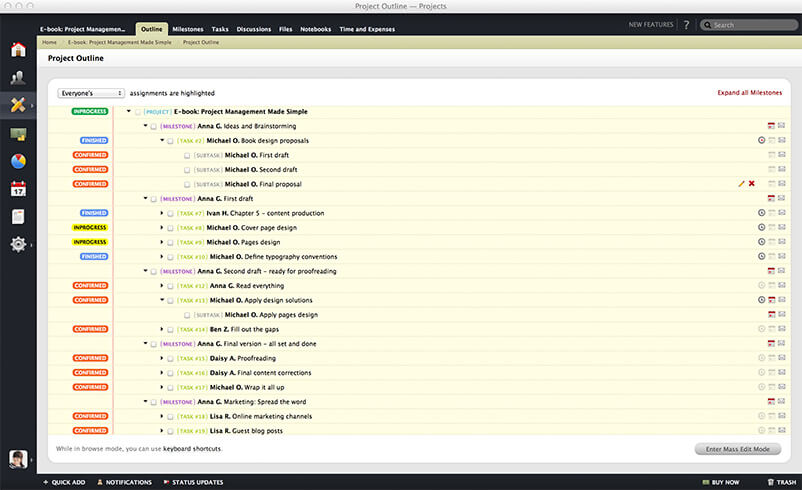Customer story written by Ryan Masuga from Masuga Design
I started using ActiveCollab many years ago as a freelance web developer. I wanted to make my young business appear more professional to my clients, so it was important to have a solid project management system in place. It was a great tool then, but it became even more useful as my business grew into the small team it is today. Masuga Design have many more projects going on at any given time, and many more clients using it every day. ActiveCollab has proven to hold up very well.
We’ve seen steady improvements and new features since we’ve been using it, including a browser notification plugin and the addition of the hosted version. We've used the self-hosted version since before there was a hosted version, and stick with it because we’re very hands-on. There’s no lack of professionalism in self-hosting, though: we run our install on a subdomain of our main website over SSL, and it’s easier than ever to add some branding with the Appearance settings in the Administration area. With the latest versions of ActiveCollab, we’re able to get notified about project updates using the web browser notification plugin, which has helped improve our team’s response time to comments and discussions.
We’ve used other systems at times, but we stick with ActiveCollab primarily because it fits the way we think about our projects, which is Project > Milestone > Task > Subtask. For example, a busy Project can have five to ten major Milestones, hundreds of Tasks, and many hundreds of Subtasks. We spend most of our time in the Tasks tab of each Project.

From the top down, the Project is the main, overarching project, like the name of a site: clientsite.com. Within each project, we use Milestones to mean subprojects, like “New Video Section” or “Fix Footer Links.”
The Tasks are everything that goes into each Milestone, and we can add as many Tasks to each Milestone as we need. The Subtasks are the nitty-gritty detailed things that need to get done, which can be assigned to anyone on the team and have different priorities, labels (statuses), and due dates. A sample might look like this:
Clientsite.com (Project)
Q1 Work (Milestone)
New Video Section (Task)
- Add fitvid.js (Subtask)
- Hook up YouTube field in CMS (Subtask)
- Finish custom Vimeo plugin (Subtask)
In addition to the Subtasks on each Task, there is also a comment thread on each Task where we can communicate with the client. These comment threads can be responded to directly via email, as well. As we mark Subtasks “Resolved” or “Need Feedback” the client can gauge how much work we’ve done, or what it is they need to review.
We haven’t seen the Tasks and Subtasks implemented anywhere else quite like they are in ActiveCollab. When I look at other systems that don’t have this level of detail, I wonder how teams keep track of who is doing what with all the smaller things that go into completing larger projects.
There are numerous core features I haven’t even touched on, such as Project Requests, Invoicing, or Time Tracking. In addition to everything that comes in the core product, there are numerous 3rd-party modules that add extra functionality. One module that we like in particular is Tasks Plus, which adds features to the already powerful Tasks.
If you’re looking for a robust project management system that is client friendly and actively developed, you would do well to try ActiveCollab.
